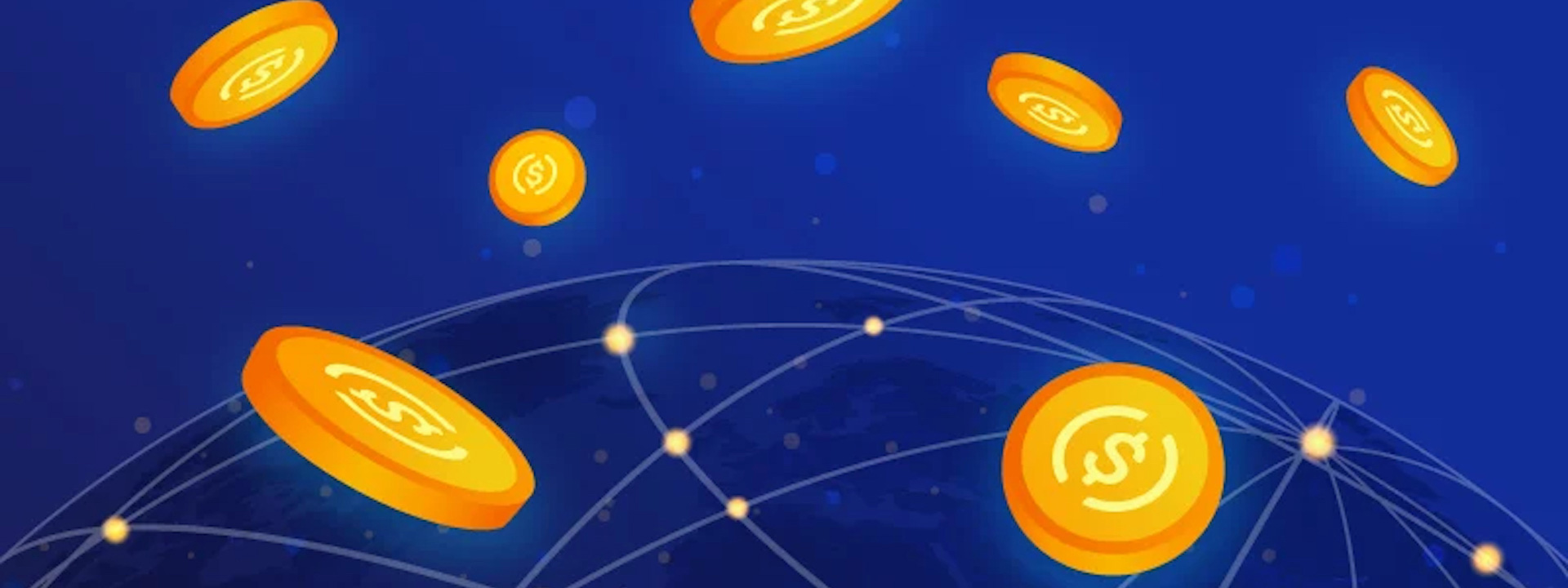

When Dee Hock founded Visa, he envisioned creating the world's premier system for the exchange of value. In today’s world, that means adapting the Visa network to accommodate new form factors for money. With this in mind, today we proudly shared some historic news about our digital currency efforts: the first transactions settled with Visa in USD Coin (USDC), a regulated stablecoin backed by the US dollar and transacted over the Ethereum blockchain. For the crypto-enthusiasts and payment experts among us, the significance of this news may be apparent—but for everyone else, we wanted to take a moment to explain what we’ve done, how we got here, and why we think it’s so significant.
But first, what is a ‘settlement transaction?’ Think of ‘settlement’ as the unsung hero of the payment lifecycle. As cardholders, we all know that magical moment of ‘authorization’: you tap your Visa card at the coffee shop and regardless of currency, continent or time zone, your payment is accepted! But how does the money for your cappuccino actually leave your account and find its way to the bank account of your local coffee shop? That’s the settlement process at work, and Visa sits at the center—making sure that at the end of the day, all those coffees and cappuccinos, for everyone everywhere, are totaled up, converted into the appropriate currency and sent to the appropriate merchant bank, who in turn deposit funds to the bank accounts of coffee shop owners across the world.
Billions of dollars are cleared and settled each day with Visa’s settlement service — securely, reliably and predictably. While it operates behind the scenes, it’s a system that has served the traditional financial sector—and everyday consumers and business owners—for decades. But what about fintechs and neo-banks that run their business in digital currencies like Bitcoin, Ethereum, or USDC? Take Crypto.com for example, the largest provider of crypto payment and trading services.
“Crypto.com wants to enable millions of consumers across the world to access and use digital currencies,” says Kris Marszalek, CEO and Co-founder at Crypto.com. “We believe in the power of this technology to move money efficiently for our customers, which is why we have built our own business and treasury infrastructure on top of digital currencies. Partners like Visa who have the capability to directly accept and interact with digital currencies help enable us to maximize the benefits of digital currencies.”
Visa’s standard settlement process for purchases made on Crypto.com Visa cards each day, requires Crypto.com to convert their digital currencies into a traditional fiat currency that Visa accepts — adding cost, time, and complexity to their daily business processes. We asked ourselves, ‘Can we make it easier for crypto-native companies to work with Visa, to manage their business end-to-end in digital currency?’ To deliver, we needed some help from our partner Anchorage, the first federally charted digital asset bank.
“Visa came to us in 2019 with an idea — make secure, efficient, and seamless settlement payments possible in digital currency, by linking Visa’s treasury with Anchorage’s custody platform,” says Diogo Mónica, Co-Founder and President of Anchorage. “This would give the next generation of crypto native issuers the option to directly settle with Visa in a digital currency over a public blockchain.”
Over the next year, our teams in treasury, technology and product worked hand in hand to connect our critical global treasury systems to digital asset custodians. Here’s a look at where the journey took us.
The journey to USDC
A vital first step was identifying the first digital asset we would offer our clients as an alternative to traditional settlement currency. Our due diligence efforts include an examination of:
- Demand: What assets are our clients interested in settling and receiving? Is there a vibrant ecosystem and development community to support this asset?
- Stability: Does the price fluctuate? Is there sufficient liquidity to convert to and from the digital asset? How long would transfers in and out of this digital asset take and how does that impact the settlement process?
- Security: Does the asset have a clear set of compliance and regulatory protocols supporting it? Are there trustworthy infrastructure players and partners that support it? Is there a clear governance or scheme supporting the asset? Are there any major vulnerabilities or risks?
USDC measured up against all these criteria. USDC is nearing $10B in circulating supply with a robust developer community and growing adoption across crypto companies and financial institutions alike. Furthermore, USDC and the Centre Consortium (the governing body behind USDC) have also shown a track record of clear compliance and regulatory engagement to instill confidence in USDC. In addition to the explosion of supply and usage, we’ve also seen the emergence of new use cases forming around USDC, including cross border B2B payments, trade settlement, and remittances.
Bridging digital and fiat
Having selected the USDC stablecoin as our pilot asset, we set about making the infrastructure upgrades necessary to mesh key components of digital currencies with Visa’s treasury operations. We’ve been hard at work over the last several months, working to support a number of key functions:
- Support reconciliation and currency conversion for stablecoins such as USDC
- Integrate Visa’s treasury systems with Anchorage, as Visa’s digital asset settlement agent
- Support a new Visa settlement report that includes settlement obligations along with public blockchain addresses for account management of crypto wallets and issuers.
After months of anticipation and careful planning, we completed the first successful settlement transaction this month —with Crypto.com sending USDC to Visa’s Ethereum address at Anchorage. One small step forward for Visa’s settlement platform, one giant step forward for the integration of digital and traditional fiat currencies. After further testing and additional conversations with clients, partners and members of the regulatory community, we hope to launch this capability for other partners in the year ahead.
We’re just getting started
The implications of our work with stablecoins are potentially far reaching — enabling our ability to one day support new Central Bank Digital Currencies (CBDC) as they become available. Central Banks are ramping up CBDCs, with 80% reporting that they are engaging in some CBDC-related effort, according to research from the BIS.¹ We are committed to supporting these initiatives so they can be integrated into the existing payments ecosystem.
At Visa, we are on a mission to connect the world through the most innovative, reliable and secure digital payment network—and we’re continuing to push the boundaries of that network by connecting to public blockchains and new forms of money. We’re proud of the work we’ve done so far, and excited about what the future holds.
- BIS Papers No 107, “Impending arrival – a sequel to the survey on central bank digital currency,” January 2020 Link